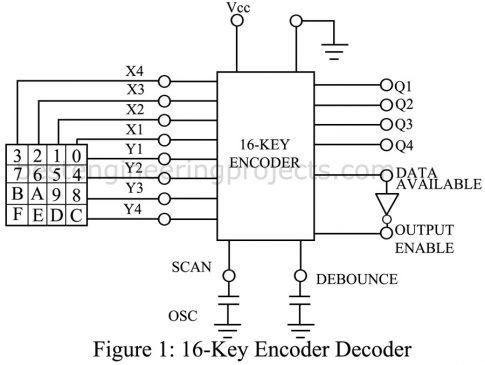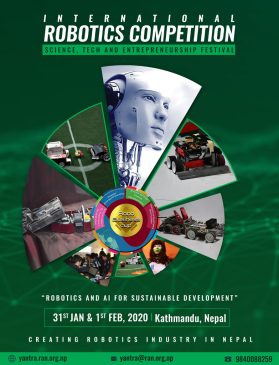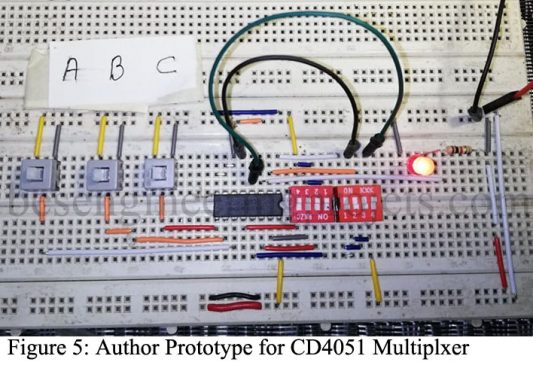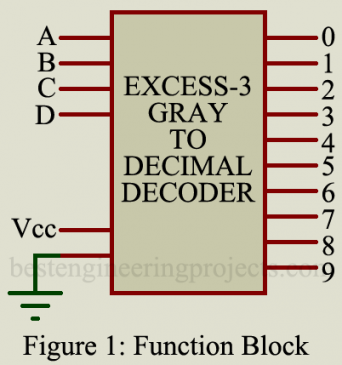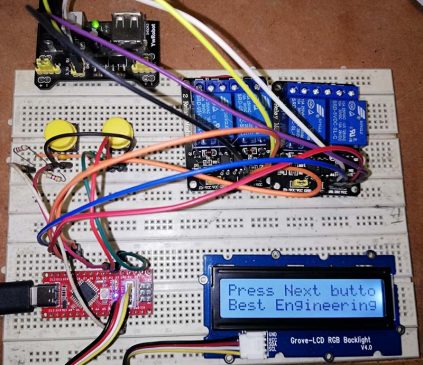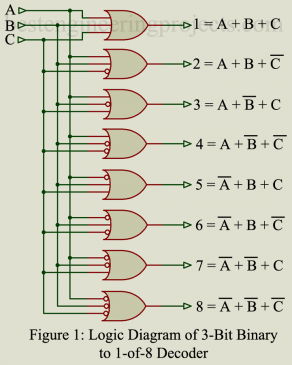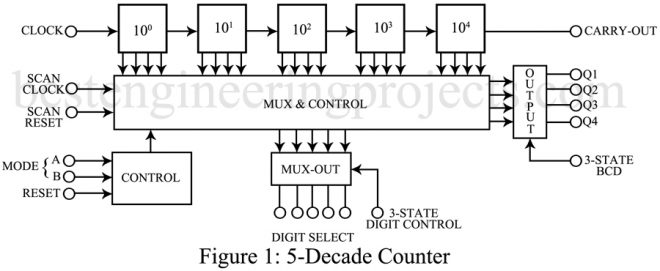In the article “16-Key Encoder Decoder IC” we will discuss about encoder IC for a keyboard, its key parameters, application and comments. Description of 16-Key Encoder Decoder IC This IC provides all the necessary logic to fully encoder a keyboard consisting of 4 x 4 single-pole, single-throw (SWST) switches. An internal debounce circuit is provided which requires only one external capacitor. Provision to eliminate the key “rollover” effect is also included. As illustrated in figure 1 connections are made to the four rows and to the four columns (X and…
Read MoreSquare Wave Generator using 741 IC
Op-amp 741 IC is one of the most popular and versatile operation amplifiers and can be used in a lot of applications including, comparators, wave generator amplifiers, etc. Today, we came up with another application of 741 IC i.e. Square Wave Generator using 741 IC. Objectives of Square Wave Generator using 741 IC: To design a square wave generator To describe the working of the square wave generator. Circuit diagram of the square wave generator The circuit of the square wave generator is shown in the figure below. One capacitor…
Read MoreYantra 8.0 Science | Tech | Entrepreneurship Festival 2020
After the successful completion of Yantra 7.0, RAN (Robotics Association of Nepal) is back again with another innovative event with the platform to learn and exchange knowledge in the field of Science, Technology, and Robotics. This year RAN and the Ministry of Education, Science and Technology will be jointly organizing this event making it bigger and better than the previous one. The History of Yantra Yantra was first initiated by the Robotics Association of Nepal in 2012 as a National Robotics competition, but over the years the event has taken…
Read MoreMultiplexer IC Interfacing | CD4051
In this article, we will discuss Multiplexer IC interfacing and different type of multiplexers like Quad 2-input Multiplexer, Dual 4-input Multiplexer, and 8-input multiplexer. We will also show you how to interface with 8-channel multiplexer IC CD4051. Quad 2-Input Multiplexer | Multiplexer IC Interfacing | CD4051 Description: One of the most widely used digital multiplexer configurations is the quad, 2 -input version illustration in figure 1. This particular IC is non-inverting and consists of eight AND and four OR circuits, arranged so that two sets of 4-bit inputs can be…
Read MoreExcess-3 Gray to Decimal Decoder
In the article “Excess-3 Gray to Decimal Decoder” we will discuss about its key parameters, application and other details. As illustrated in figure 1(a), this type of decoder has a 4-bit input and a straight decimal output. The 4-bit input, however, is not encoded according to the BCD system but rather according to the excess-3 (gray) code. The difference becomes apparent in the truth table of table 1. This type of code is usually used in special military or industrial applications and is not frequently found in digital computers. In…
Read MoreBCD to Decimal and 7-Segment Decoder
In this article, we will discuss BCD to the decimal decoder and BCD to 7 segment decoder its key parameters, application, and comments. BCD to Decimal Description: This type of decoder is probably the most widely used in all digital systems because it changes the inherent binary codes used within the system to the decimal code used by the human operators. Figure 1 illustrates the function block of a basic BCD-to-decimal decoder. Four input lines represent the decimal numbers 0 through 9. This type of decoder is often used in…
Read MoreNoise Free Dual Polarity 12V Power Supply Circuit
Power supply has been considered a role in an electronic circuit. Power supply furnishes the voltage and current requirements for electronics circuit operation but the problem is most of the electric power is generated as AC power. But for the operation of most of the electronics circuits, we need a DC power supply. Sometimes the output of the power supply consisting unwanted ripple components i.e. component of supply frequency and its harmonics. We should take care of this unwanted noise or harmonic components because this might cause problems (especially in…
Read MoreArduino Based multiple Device Control using Interrupt
In the project “Arduino Based multiple Device Control using Interrupt” you will learn how to control multiple appliance with two switches by using the concept of interrupt. In this prototype we are going to control four devices using two interrupt pin (switch). You can increase or decrease the number of devices according to your requirement but number of switches is same (two). When button is pressed, interrupt sun-routine is called and control algorithm runs. Features of Arduino Based multiple Device Control using Interrupt: Only two button switches are used to…
Read MoreDecoder and Encoder IC
In this article we will discuss about decoder and encoder IC, its key parameter and its application. Let’s start with its description Description Decoder and Encoder IC Decoders are essentially an arrangement of logic elements that are combined to change from one digital code to another. The term “decoder” is most frequently used but, depending on the point of view, the term “encoder” is equally correct. Figure 1 shows the logic diagram of a 3-bit binary-to-1-of-8 decoder. The inputs A, B, and C can represent any logic function, and the…
Read More5-Decade Counter with Multiplexed Output
In the article 5-Decade Counter with Multiplexed Output we will discuss about decade counter it’s key parameter and its applications. Let’s start with description. 5-Decade Counter with Multiplexed Output Description This IC is an example of a specific system function implementation. As illustrated in figure 1, the IC contains five-decade counters in cascade. In effect, then, the first counter, 100, will count from 0through 9, the second counter 101, will count from 10 to 90, and so on. The total maximum count of this unit is 99,999. The output of…
Read More